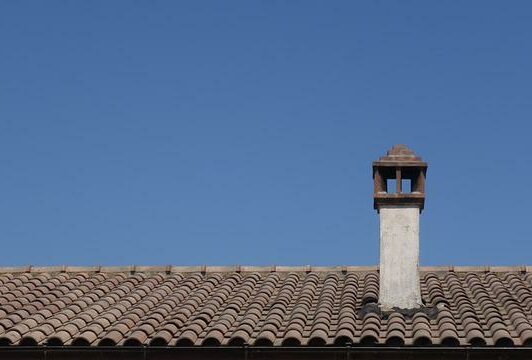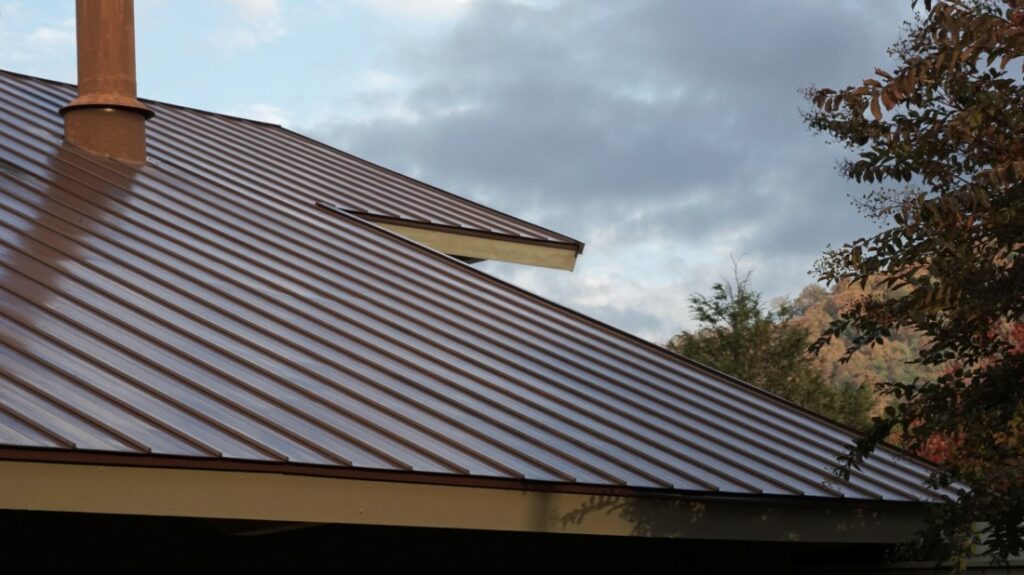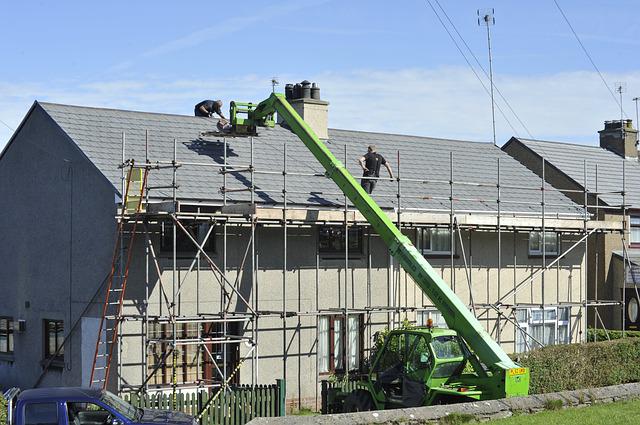
Whether you're in the market for a new home or intend to stay put in your current one, you're probably aware of the state of your roof.
However, it can be difficult for homeowners to determine when to repair their roofs, and many put it off due to the costs. While we are all aware that roofs do not last indefinitely, homeowners may be wondering how long a roof lasts. Age is a significant element in deciding if you require a new roof.
In general, you may anticipate that a roof lasts approximately 30 years. However, the actual lifespan of your roof depends on several factors, including the roofing materials utilized and the environment and care procedures that your roof is exposed to.
| Factor | Reasons |
| The Quality of Installation. | The quality of the installation process affects the roof's durability. A well-executed installation will extend the life of your roof, but a poorly executed installation will diminish its life. |
| Environmental Circumstances. | High winds, harsh temperatures, and falling debris can all shorten the life of your roof. |
| Quality of Materials. | While less expensive materials are initially less costly, they will require replacement more frequently than more expensive roofing materials. |
| The Roof Material Used. | Each roofing material has a distinct level of durability, which means that it will last longer or shorter under various conditions. |
The type of roof an individual chooses impacts how long a roof lasts. When deciding what material to use, you should consider each of the points listed below.
Asphalt shingles are the most frequently utilized roofing material in today's United States. There are numerous asphalt shingles, which are simple to install, durable, and surprisingly affordable to manufacture. Their pricing and lifespan enable them to compete well with other roofing kinds, and they come with up to a 25-year warranty.
Asphalt shingles, composed of fiberglass and asphalt sealant, can effectively protect your roof structure from snow, ice, wind, rain, and harmful ultraviolet rays. They are available in hundreds of styles and colors. The majority of asphalt shingle roofs have a lifespan of between 15 and 30 years.
However, the longevity of your shingles varies depending on climate and weather circumstances. For instance, asphalt shingles will not survive as long in Arizona due to the severe temperature swings. The type of shingle roof you choose also affects the lifespan of your roof.

While the possibilities may seem endless, asphalt shingles are an excellent choice for nearly any home and definitely contribute to how long a roof lasts; so how do you choose? Asphalt shingles come in three primary varieties used to cover the roof of a house.
3-tab asphalt shingles, often known as "strip shingles," acquire their name from how they are cut and installed.
They are the simplest type of shingle, consisting of a single layer of asphalt that has been chopped into strips. They appear flat, giving your roof a slate-like appearance following installation.
Since 3-tab shingles are produced from a single strip, they are cheaper than many other asphalt shingles and competing roofing materials.
The disadvantage of 3-tab shingles is that they offer fewer aesthetic alternatives and are more prone to blow off than other asphalt shingles. Generally, a 3-tab shingle roof will last between 18 and 20 years. Some 3-tab shingle roofing materials can be as little as $0.90 per square foot when pricing.
This is the most prevalent type of asphalt shingle. It is often referred to as "architectural shingles" or "laminate shingles." They can be constructed to resemble natural slate or wood shake looks, thereby increasing your home's curb appeal. During manufacture, they are given two or more layers to provide the final roof a thicker, more three-dimensional appearance.
One disadvantage of dimensional shingles is that they are heavier than 3-tab shingles, increasing roof weight. They are, nonetheless, more durable due to their double layering. The dimensional shingle can endure up to 25–28 years when correctly put.
Additionally referred to as "premium shingles," these are the best quality asphalt shingles available. Their laminated design stands out for its aesthetic and utility, providing superior weather protection and beauty to your home.
They are sturdy, practical, and come in a variety of colors. They are by far the most durable asphalt shingle alternative. They are the most accurate representation of wood shake and slate roofing tiles. Their primary disadvantages are their weight—twice as heavy as 3-tab shingles—and their expense.

A metal roof can endure between 40 and 70 years, with warranties ranging from 20 to lifetime, depending on the metal type and design of the roof.
Metal roofs constructed of quality metals such as copper and zinc can occasionally survive over 100 years! There are several varieties of metal roofing, and each one has a unique lifespan.
The most prevalent form of metal roofing, standing seam metal, has a 50-year lifespan and is resistant to winds exceeding 100 miles per hour.
They are less expensive to install than standing seam roofing but have a lifespan of 25 to 50 years.
Are popular in hurricane-prone places, such as Florida. This type of metal roof has a life expectancy of between 30 and 50 years and can withstand wind gusts of up to 155 miles per hour.
The following indicators are signs to replace your metal roof: widespread rust, discoloration, roof leak damage, water staining in the attic, and mold.
Clay tile roofs are incredibly robust, lasting between 50 and 100 years, and manufacturers provide warranties ranging from 30 to life! Clay tile roofs have a high life expectancy because they are resistant to weather, rot, and fire.
To extend the life of your clay tile roof, maintenance is critical. If a clay tile roof is not cleaned regularly, algae, moss, and mold can grow. Moss is the most dangerous type of moss, as its roots can penetrate the tiles, resulting in roof leaks.
Clay tile roofs will not endure as long in colder climates due to the continual freezing and thawing. However, you can have your clay tiles sealed to help mitigate the effects of cold weather.
Slate is ultimately one of the best materials to ensure your roof lasts!
Slate roofs have one of the most long-lasting lifespans of any roofing material, extending between 75 and 200 years. Slate is exceptionally resistant to adverse weather conditions such as high winds or rapidly shifting temperatures. Additionally, it requires less upkeep, as slate absorbs minimal moisture.
Remember that slate is a weighty material - 100 square feet of slate weighs around 1,000 pounds. Before adding a slate roof, you should have your existing roofing system evaluated to ensure it can support the additional weight.
The secret to a durable roof is to schedule routine roof maintenance and inspections performed by roofing experts. By diagnosing problems early and doing roof repairs, you can significantly increase the life of your roof.
Your roof is continually under attack by the elements, structural movement, and tension. While all roofs age naturally, problems caused by neglect, abuse, contamination, or accidents can result in significant, costly repairs or premature failure of the roofing system if not recognized early.
Plan and begin an inspection schedule during the first year after your roof is installed. Proper record-keeping and documentation are critical components of a successful inspection and maintenance program.
✅Have someone suitably skilled in the materials used on your roof, whether single-ply or a specific coating, evaluate the roof at least twice a year and follow significant weather occurrences.
✅You must provide walkways if people are constantly on the roof or if personnel responsible for maintaining rooftop equipment such as HVAC units and antennas are scheduled every 30 days or more frequently.
✅When servicing rooftop equipment, workers should use walkways and caution to avoid puncturing the roofing membrane with their tools and equipment.
✅Keep any petroleum products such as solvents, grease, and oils away from the membrane to avoid degradation.
✅To avoid clogging, maintain a clean roof surface, mainly drain areas. Within 48 hours of rain, drain ponding water from the roof.
✅Scrub away handprints, footprints, general traffic grime, industrial pollutants, and environmental dirt with a detergent and water solution, followed by rinsing with clean water.
✅If any chemicals contact the roofing membrane, contact the manufacturer. Certain compounds may cause the membrane to deteriorate or to bulge.
✅Even if you maintain and examine your roof regularly, flying debris, personnel servicing equipment, and other causes might cause damage.

Insulation that is brittle or twisted may indicate a water leak. Locate the leak and ascertain whether it is in the roof membrane, a wall, a curb, a skylight, metal ductwork, or a plumbing issue.
Make temporary repairs with lap sealant or any other construction-grade caulk. Roof cement should not be used to repair rubber (EPDM) membranes.
Roof cement contains petroleum compounds, which may cause the membrane to deteriorate. Contact the membrane manufacturer to report the leak if the roof is still under warranty.
Although maintaining a flat roof is not rocket science, it is vital to understand how to go and what to inspect. Indeed, replacing a roof may rapidly become costly, and the repairs often result from the owner's bad maintenance practices. Here are a few ideas to assist you in avoiding premature roof replacement on your residential or commercial property.
To ensure your roof lasts, you should evaluate your roof — or have it inspected by professionals — at least twice a year, in the spring and fall, to ensure that it is in good shape. Is the location experiencing a storm (rain, ice, wind, etc.)? Take the time to inspect your roof for damage.
Even a tiny amount of water intrusion is not to be taken lightly! Indeed, not only can moisture infiltration cause damage to your roof, but it can also result in runoff in the walls, resulting in additional expenses!
By evaluating your roof regularly, you may avoid this type of discomfort, exacerbated by the fact that a flat roof does not remove water as quickly as a pitched roof.